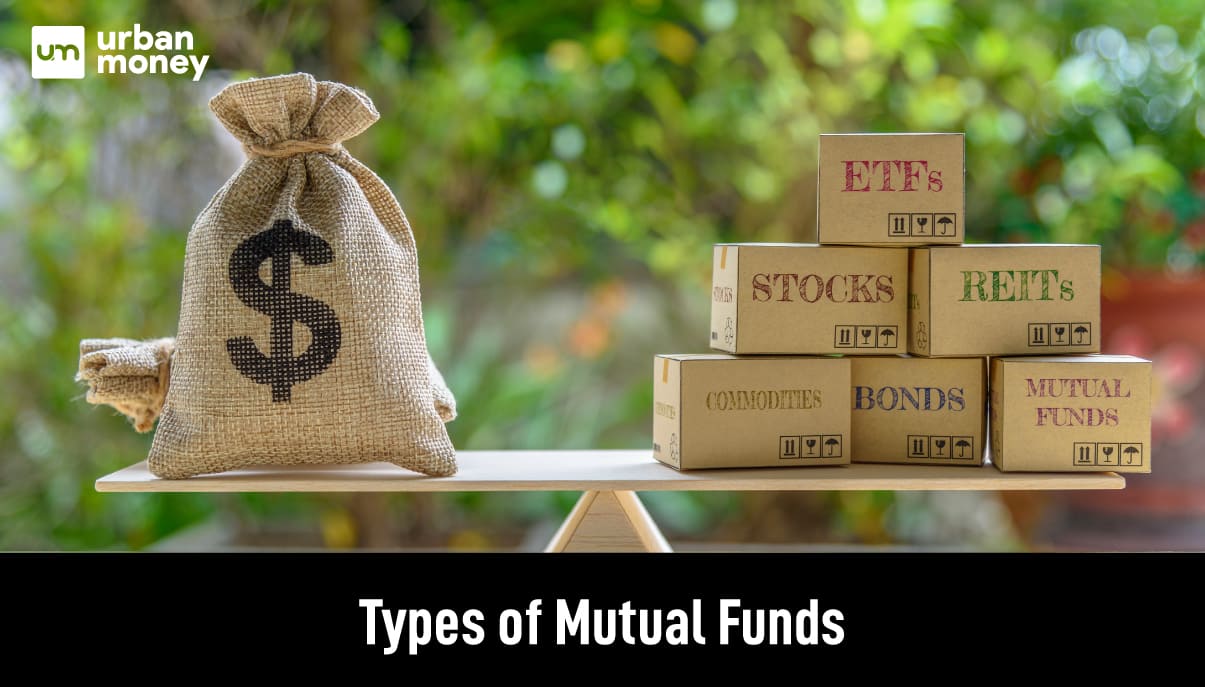Top 10 Best Private Banks in India List 2025
January 09, 2025
Mutual Funds Archive | Types of Mutual Funds

September 14, 2022


With the world bearing consequences of increasing inflation, for many, spending a luxurious life with just an active income is quite challenging. Passive income has become a necessity. Hence, investing in the right kind of instrument is crucial.
While the market is flooded with different types of investment options, many novice investors hop on the stock market bandwagon without any prior knowledge or experience. As a result, they end up losing money. Therefore, beginners must always start with something associated with fewer risk factors, such as mutual funds. But the existence of different types of mutual funds lead you to a confusing situation.
A mutual fund (MF) is an investment tool that gathers funds from various investors and invests them in securities like bonds, stocks, and short-term debt. Furthermore, your fund is managed by experienced fund managers. Since there are different types of mutual funds, you have to research and find out which mutual fund is best for long-term. Keep reading the blog, to find which MF could be an ideal investment choice for you!
Table of Contents
ToggleThere are six types of mutual funds. They are as follows:
Some of these funds are further divided into different categories.
Mutual funds based on asset classes pertain to grouping investment. Such MFs are hinged on similar or common features. They may also be subject to analogous laws and regulations. The following are the mutual funds based on asset classes:
Such a mutual fund scheme typically invests its assets in stocks of different companies. These stocks usually have investment goals of the underlying scheme. Equity mutual funds are further classified into different categories, such as:
A debt mutual fund is an MF scheme that invests in fixed-income securities like corporate debt securities, corporate bonds and government bonds, money market instruments, etc. offering capital appreciation. Debt mutual funds are further classified into the following types:
Before you dive into investing, you must first define your investment objective. If you aim to increase wealth, save taxes, and make short-term gains, then you must choose mutual funds based on investment goals. Based on the ultimate investment goals, mutual funds are categorised as:
Such mutual funds are long-term investments that offer constant returns after the investor retires. Pension funds divide the investment between debt and equity instruments. The investment division ensures that the debt instruments balance the risk while offering low but steady returns and the equity component renders higher returns.
Investors can either draw their return in a combination of a fixed pension or a lump sum amount or as either of them.
Fixed-income MFs are a sub-category of debt mutual funds. These funds focus on distributing the fund in a combination of income assets, including security, bonds, certificates of deposits, and debentures. Skilled fund managers are initially accountable for providing a regular income to the investors while also maintaining capital protection and managing income mutual funds. Risk-averse investors pin their hopes in income mutual funds to keep their wealth for a minimum of 2 to 3 years.
Such mutual funds invest the capital specifically in growth-sector equity stocks. True to its name, the main aim of Growth Mutual Funds is capital appreciation. These kinds of funds are not suitable for long-term investment options. Moreover, they carry a high-risk factor.
As the name suggests, Tax Saving Mutual Funds are types of funds that offer tax benefits to investors. These are also known as Equity-Linked Saving Scheme (ELSS) and funds invested in such schemes qualify for tax deductions under Section 80C of the Income Tax Act. While Tax Saving funds may have high risk, they can provide you with impressive returns if the scheme does well. So, it is a win-win investment deal.
The prime objective of liquid mutual funds includes offering liquidity. They are a sub-class of debt mutual funds, wherein the money is mainly invested in ultra-short-term and short-term instruments like treasury bills, bank certificates of deposits, commercial papers, and more. Such mutual funds provide moderate returns and are low on risk. Investors seeking short-term investments can consider parking their money in the best liquid mutual funds.
The structure of mutual funds defines the ease and flexibility of the sale and purchase of funds. Based on the structure, the mutual funds are categorised into three different types that are as follows:
In close-ended mutual funds, investors get the opportunity to buy stock units only at the time of the initial offer period. Once these units have attained the maturity period, depositors can redeem them. Since close-ended mutual funds have less liquidity, they are listed on the stock exchange for trade to compensate for the same.
You can sell or purchase open-ended mutual funds all through the year. The redemption or purchase of such funds is carried out at the prevailing Net Asset Values (NAVs). In turn, investors can carry on investing if they want to. Moreover, this open-ended scheme doesn’t set any limit on how much the investor can invest.
The sole purpose of this fund is to bridge the gap between close-ended and open-ended mutual funds. Quite similar to close-ended MFs, interval funds are also available as an initial offering. Later, the fund management company opens these funds for the repurchase of shares at various intervals during the fund tenure. Initial unit holders can sell their shares to the mutual fund house and unload their shares.
Every investment is associated with some kind of risk, and mutual funds schemes are no different. Given below are classification of mutual funds based on risks:
While the name may scare you off, with a better strategy and research, high-risk mutual funds can offer you higher returns compared to other funds. Moreover, these mutual funds are highly volatile, and the returns are not certain. Since high-risk mutual funds invest in volatile securities, their returns are mostly unpredictable.
Such types of mutual funds have moderate risk and invest in both debt and equity securities. Because of the hybrid portfolio, Medium Risk funds yield returns that transcend inflation over the medium tenure.
Furthermore, they are also less volatile than pure equity MFs but slightly riskier than pure debt funds that are low-risk funds. Moderate risk funds have an ideal investment term of three to five years.
The returns offered by low-risk mutual funds are relatively stable. However, this doesn’t mean that these schemes don’t involve any risk. These schemes offer higher returns. Compared to conventional assets like fixed deposits, low-risk mutual funds are more tax-efficient. Hence, it’s highly suitable for investors who prefer to stay away from risks.
Over the last two to three decades, the investment market has changed drastically and mutual funds have come a long way in the country. Investors have become more aware of financial markets. Retail investors find mutual funds to be the most preferred investment option for the benefits they offer. Therefore, if you are willing to level up your finances and still play safe, pin your hopes on the different types of mutual funds we discussed in the blog above.
| Related Resource |
| Tax Saving Mutual Funds |
| Best Mutual Funds in India 2022 |
Tata Digital India Fund Direct-Growth, Aditya Birla Sun Life Digital India Fund Direct-Growth, ICICI Prudential Technology Direct Plan-Growth, Quant Tax Plan Direct-Growth, SBI Technology Opportunities Fund Direct-Growth, etc. are some top performing mutual funds to invest in.
There are six distinct types of mutual funds, including equity or growth schemes, balanced funds, money market or liquid funds, fixed income or debt mutual funds, hybrid /monthly income plans, and gilt funds.
Fund of Funds mutual fund invests in other mutual funds schemes.
Quant Tax Plan Direct-Growth, Canara Robeco Equity Tax Saver Direct-Growth, Kotak Tax Saver Fund, Mirae Asset Tax Saver Fund Direct-Growth, and others are some high-interest returning mutual funds offering tax benefits.
Yes, if you plan investment strategically, investing in mutual funds like SIPs in equity mutual funds could be a safe investment and have some merit too.










© 2025 www.urbanmoney.com. All rights reserved.

Need Loan Assistance?

















